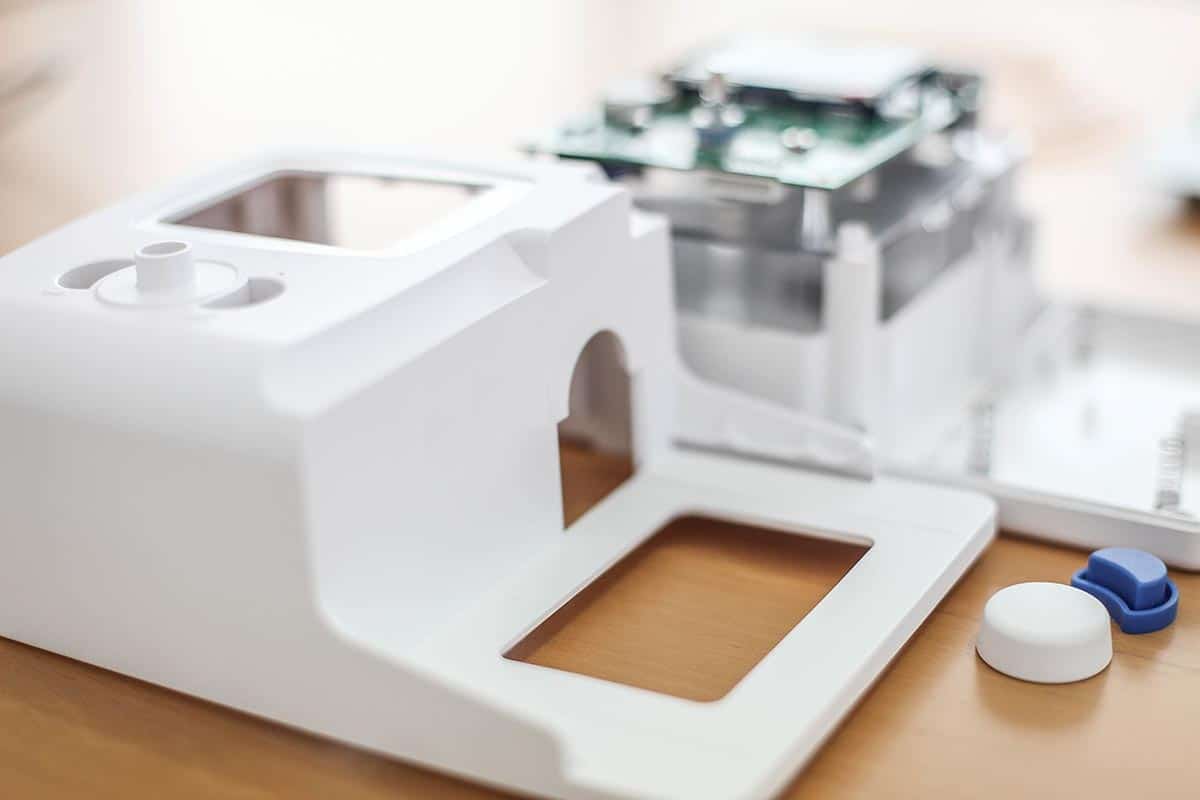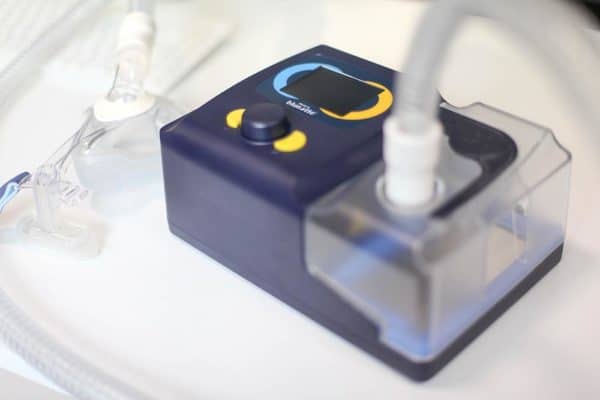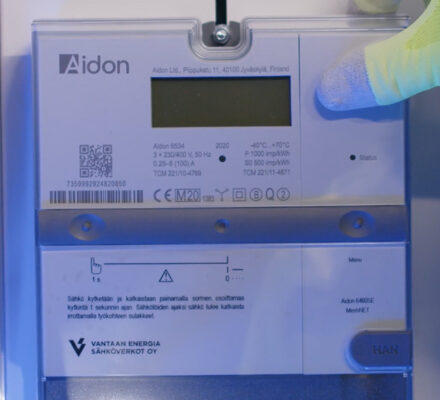
Up to 21% of women and 31% of men suffer from obstructive sleep apnea syndrome (OSAS). Its side effects persist long after they’ve awoken from a fitful night’s sleep, such as morning migraines and daytime drowsiness.
The condition also indirectly affects millions of other people. For example, drowsy driving is responsible for 1,550 fatalities and 40,000 nonfatal injuries annually in the U.S. alone.
Continuous positive airway pressure (CPAP) ventilators are an effective treatment for OSAS, but they have a few caveats. A major challenge is determining the optimal air pressure level. If it is too high, patients may be jarred awake and even stop using their CPAP ventilator altogether. If it is too low, treatment won’t be effective.
More Data Enables a Better Night’s Sleep and
Improved Patient Outcomes
CPAP titration is a process for new patients. At night, the ventilator cycles through a variety of pressure levels until it identifies the most effective one for controlling OSAS events.
However, the titration process has never been as precise as clinicians would like. Synthetic indicators such as medium pressure and P95 provide a useful but incomplete picture of the patient’s condition and treatment.
Artificial intelligence machine learning is providing clinicians with powerful new tools for identifying optimal therapy. However, it’s cost-prohibitive to build this sophisticated computational power into each CPAP ventilator. That’s why SXT developed a solution that enables the machine learning to reside in the cloud instead.
SXT’s Blunotte Cloud has three major components:
- An automated CPAP ventilator with embedded telemetry for sending data, such as pressure, flow and leaks, to the cloud.
- SXT’s proprietary AUTOCPAP algorithm, which uses machine learning techniques to identify central and obstructive events, delivers the proper therapy for each patient.
- Bluviewer, a software-based sleep-management platform that enables clinicians to analyze usage statistics and records.
AUTOCPAP also smooths out pressure changes, which has several benefits for patients. For example, they’re more likely to continue using their CPAP ventilator because it provides a consistent experience — the kind that helps them sleep through the night. Patients also are more likely to remain asleep because consistent pressure at the right level mitigates events that otherwise would have awakened them.
Clinicians also benefit. For example, Blunotte provides data that’s higher quality and more granular than other CPAP solutions offer so that clinicians can make more informed care decisions,” said project manager Luca Maggi. “Public and private insurance providers also benefit because when patients maintain their CPAP therapy, they’re much less likely to incur additional care costs for related conditions such as anxiety, high blood pressure and depression.
Flexible, Affordable IoT Modules Enable Reliable Cloud Connectivity
Reliable connectivity is critical for ensuring that CPAP ventilators can upload their data to the cloud and receive changes such as pressure configurations. Many patients don’t have broadband service in their homes, so SXT needed an alternative network technology that’s available everywhere. Cellular was the obvious choice.
SXT also needed a cellular module capable of using any operator’s network in Italy, the first country where Blunotte Cloud launched, as well as other European countries in the future. The module also had to be inexpensive enough to help keep Blunotte Cloud affordable.
To meet those requirements, SXT turned to Telit, which recommended the UL865 EUD. This tri-band GSM/GPRS/EDGE/UMTS/HSPA module supports uploads as fast as 5.76 Mbps and downloads up to 7.2 Mbps, making it ideal for quickly transferring large amounts of data to the cloud. The UL865 EUD also gives SXT the flexibility to update module firmware over the air.

“Telit enabled us to develop a reliable, flexible solution coupled with a tailored SIM data plan. The ability to leverage multiple operators to identify the best rate plan and the best data performance has been key for making Blunotte Cloud available for more patients. With Telit’s help, we’re revolutionizing OSAS treatment.”
Luca Maggi, Project Manager
SXT also liked that the UL865 EUD is available with services that reduce cost and complexity:
- SIMs and data plans: Telit’s OPTIMUS service analyzes the module’s data usage to identify the most cost-effective rate plan, and then automatically applies it retroactively for maximum savings. These functions also free SXT to focus on expanding Blunotte Cloud to additional European marketuls and developing other innovative solutions instead of manually comparing and changing rate plans.
- Management: Telit’s IoT Portal is a cloud-based platform-as-a-service (PaaS) that streamlines and centralizes a wide variety of management tasks for devices, applications, connectivity, security and more.



